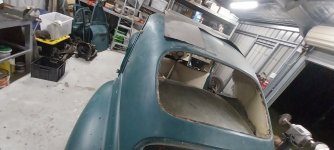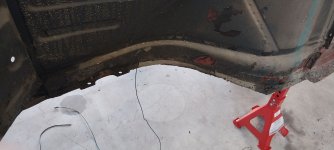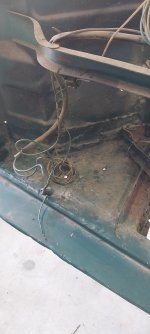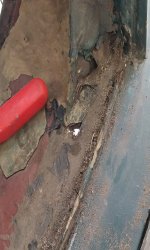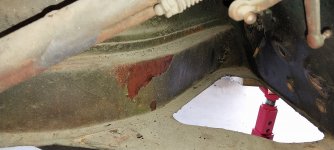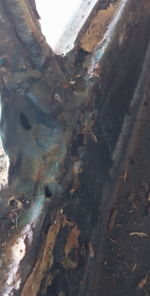Good times in the shed this morning . Made even better, when Scott (Demannu) dropped in to lend a hand.

After a couple of hours, we had all remaining mechanicals out. The motor wasn't in the car, when it was purchased so that save time.
 The new Supervisor was keeping a close eye on everything.
The new Supervisor was keeping a close eye on everything.
Getting the fuel tank out was a bit dicky, as it had been glued/sikaflexed in place. It also had a covering of epoxy all over it.


 Headlights and grille removed.
Headlights and grille removed.
 .
.

The disc brake set-ups are heading to Melbourne......
 Would appreciate it, if someone can tell me why the speedo cable wont come out. The locking screw set up has been totally removed and the cable head moves freely in the box housing .Resonable force has been applied when trying to pull it out.
Would appreciate it, if someone can tell me why the speedo cable wont come out. The locking screw set up has been totally removed and the cable head moves freely in the box housing .Resonable force has been applied when trying to pull it out.
As expected rust and some doggy repairs are starting to become evident. Oh well, it is 68 years old. Definietely no complaints though.
Cheers,
Dano
After a couple of hours, we had all remaining mechanicals out. The motor wasn't in the car, when it was purchased so that save time.
Getting the fuel tank out was a bit dicky, as it had been glued/sikaflexed in place. It also had a covering of epoxy all over it.
The disc brake set-ups are heading to Melbourne......
As expected rust and some doggy repairs are starting to become evident. Oh well, it is 68 years old. Definietely no complaints though.
Cheers,
Dano

